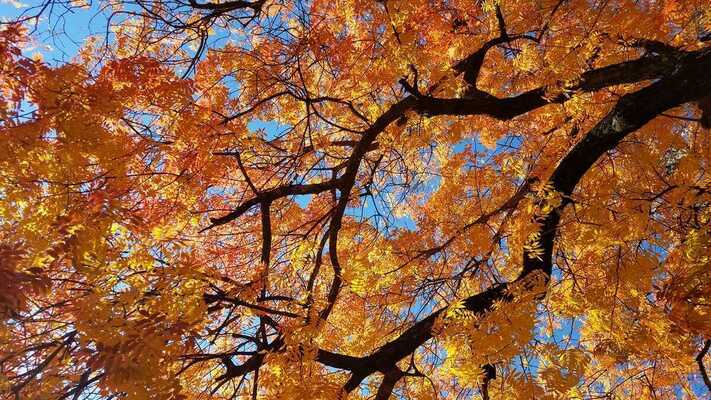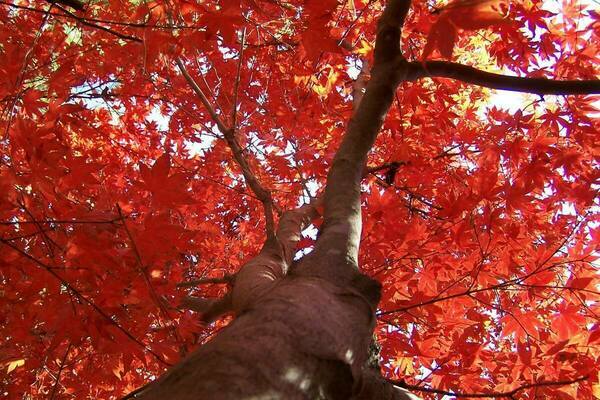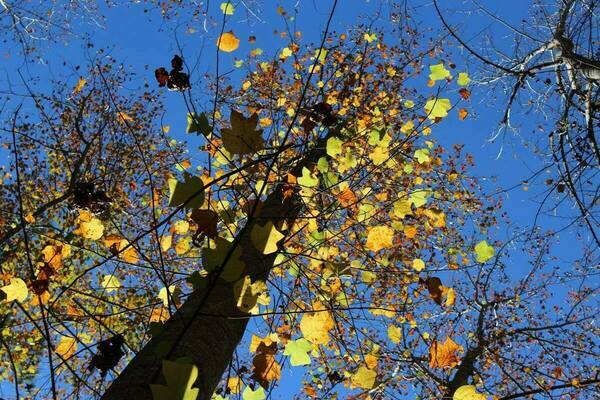Beauty and science dance in the Fall
As Albert Camus once said, "Autumn is a second spring when every leaf is a flower.”
And although East Texas is not always known for flaming fall beauty like the Northeastern states, we definitely have our fair share of gorgeous colors.
There is a good bit of science behind all that beauty. It is a complex dance between weather and day length that ends in a lovely show if all things go well. Droughty summer and fall periods can mean that the leaves scorch and fall prematurely and quickly with little to no color show, and an early hard freeze can potentially cause a sudden early dormancy. But if all goes well, and the dance partners cooperate, we have some absolutely beautiful yellow, orange, and red fall colors.
What makes those colors? Pigmentation, which is mainly driven by the tree’s need to create food, meaning that the leaves appear green most of the year. This is due to chlorophyll which is used during photosynthesis as part of the food-making process. The other pigments – xanthophylls (yellows), carotenoids (oranges) and anthocyanins (reds) – are present, but masked by the chlorophyll. As the temperature and daylength change, the chlorophyll begins to break down, other chemical changes start to occur, and thus the colors reveal their glory.
Here in East Texas, it is common to begin to see color at the very end of November or beginning of December, a great deal later than the fireworks of fall colors up North. In Cherokee County, we have some excellent viewing spots. Ruth B Nichols Arboretum shows off the stunning yellow of Ginkgo and bright orange cypress, as well as purply-red dogwood along with many others, while ID Fairchild State Forest has all our native beauties including red-orange chalk maples and the lovely reds on red maples and white oaks and a gem of a grove of tulip poplar trees with stunning fall shades, if you are in the mood to take a stroll.
Rides through Dialville, down FM 768 to Gallatin, and through FM 241 to Linwood offer excellent color shows as well.
There is fall treasure nearby as well. The Mast Arboretum on the SFASU campus in Nacogdoches is stunning when Fall color peaks. The Japanese Maples are just a fraction of the color the Mast has to offer, and if you follow along on Facebook, they generally will keep you informed of when the color is at its best, so you can plan your visit accordingly.
If you are looking to plant trees to create strong fall color showing, there are some excellent trees to focus on. A few have been mentioned above, but Chinese pistache (Pistacia chinensis), the Parrotia species persica and subaequalis, Shumard Oak (Quercus shumardii), and of course Crape Myrtle (Lagerstroemia). Shrubs aren’t to be neglected here, as any woody perennial has the potential for a fall show. Some other ideas are Oakleaf Hydrangea (Hydrangea quercifolia), Virginia Sweetspire (Itea virginica), and Burning bush (Euonymus alatus).
Plus, don’t forget colorful berries! Many roses make colorful red and orange rose hips in the fall (plus those hips are full of vitamin C) and females of the Holly species make berries in a wide range of colors. Deciduous hollies like Ilex decidua and verticillata make an especially lovely show.
Since the fall foliage in Texas can bring such beauty to the table, those 4H members in District 5 (East Texas) have a new contest opportunity: Fall foliage photography and identification. This new fun photo challenge is open to both 4H youth and adult registered volunteers. Contact your local AgriLife Extension office for more details.
Kim Benton is the Cherokee County AgriLife extension horticulture agent, based in Rusk.
Please support The Cherokeean Herald by subscribing today!
